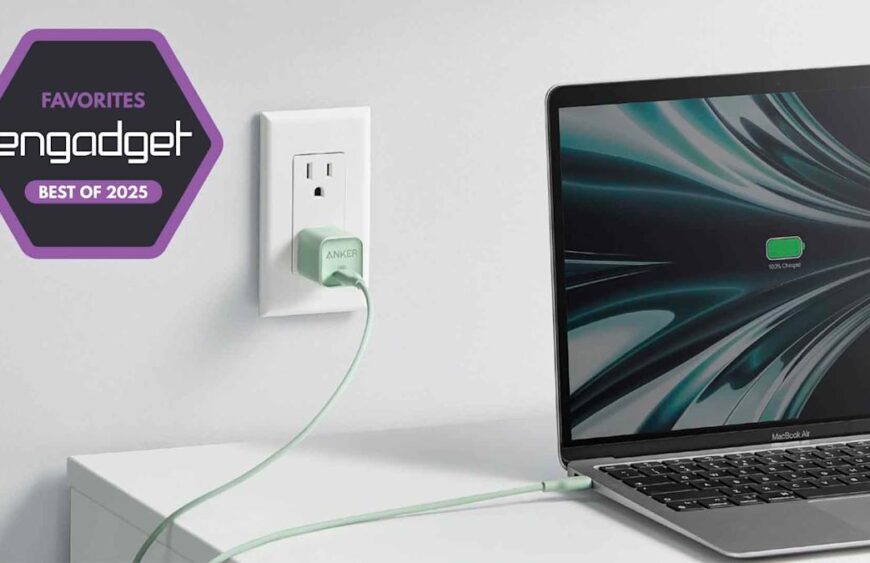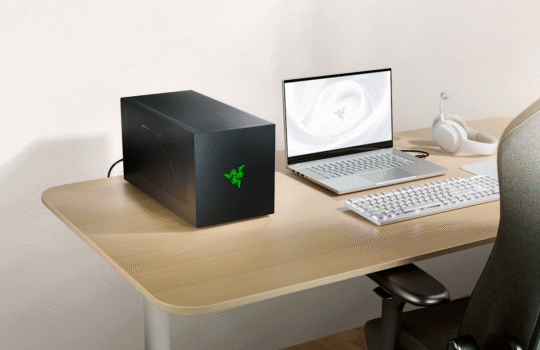The best fast chargers for 2025

These days, charging your gadgets shouldn’t feel like a chore — it’s about speed, efficiency and convenience. With so many devices supporting fast charging over USB-C, the right accessories can make a huge difference in keeping your gadgets juiced up without long wait times.
That said, power bricks fall into a lot of different categories. Depending on the situation, you may only need an extra adapter for your nightstand. Alternatively, larger multi-port options are better for keeping a bunch of devices topped up when traveling, and bigger laptops may require adapters with higher outputs.
The best fast chargers take advantage of the latest charging technology to deliver the quickest possible power-ups. With Apple having finally fully transitioned its devices over to USB-C, it’s easier than ever to have a small handful of adapters (or even a single brick) that cover all of your gadgets. To help you find the right fast charger for your needs, we’ve rounded up the best fast chargers available right now, so you can spend less time waiting and more time using your devices.
Best fast chargers for 2025
If you just need an extra power adapter that you can put in a convenient location (like next to your bed or a couch), you can’t go wrong with Anker’s 30W Nano Charger. It’s exceedingly affordable at under $20 while providing excellent charging speeds for its size. And because it’s so small, it can fit pretty much anywhere. The folding prongs are a nice touch as well.
If you’re looking for a budget-friendly two-port adapter, consider Plugable’s 40W Dual USB-C Charger. At $60, it is pricer, but it gives you the ability to power up a couple of devices at the same time like a tablet and a phone. Like a lot of other bricks, its 40W output is shared across both ports. Keep that in mind if you have two devices plugged in at the same time, since charging times will be slower.
If I were trying to pack light and could only choose one fast charger to bring with me, it would be Anker’s 67W three-port wall charger. Not only is it even more compact than the previous model, it has three ports (including one USB-A) and a max output of 67 watts. That’s enough to support most ultraportable laptops. And thanks to Anker’s PowerIQ 4.0 tech, the brick can detect which device plugged into its USB-C ports has the lowest battery before allocating additional juice to that gadget. For anyone who likes this design but wants something with a higher power output, Anker has a 100W model that’s also really compact.
For anyone who puts a premium on thinness, UGreen’s 65W Nexode Ultra-Slim fast charger is another excellent contender. Like Anker’s model, it has three ports (one of which is USB-A) and a similar max power output. To maintain its super sleek dimensions, Ugreen thoughtfully included folding prongs. The one small issue is that it may block adjacent outlets if plugged into a crowded power strip due to its thin yet wide design.
One thing I really appreciate about Plugable is that the company is great at making simple, affordable gadgets, and its 140W USB-C GaN power adapter is a great example of that. Sure, it only has a single port, but with a max output of 140 watts and price of just $50, it’s one of the most powerful chargers for the money on sale today. This amount of juice is enough to support all but the biggest and most powerful laptops on the market, while the charger is also smaller than many first-party bricks.
If you just want a single charger that can handle pretty much any device, Anker’s 140W laptop charger is it. It provides enough juice to satisfy all but the most power-hungry gadgets (like 18-inch gaming notebooks) and it comes with four ports (three USB-C and one USB-A) for simple simultaneous charging. While it might seem unnecessary, Anker’s built-in display makes it easy to see exactly how much electricity is being sent to each device. Unlike a lot of less expensive bricks, this one comes with an included 140W cable as an added bonus.
I carried Razer’s USB-C GaN charger around for years because it was one of the first 140W adapters on the market, and I love the combination of a sturdy metal housing and support for interchangeable plugs when traveling abroad. However, at $180, it’s a bit too expensive to wholeheartedly recommend. That’s where Satechi’s 145W travel charger comes in, because it offers a similar power output along with swappable international plugs for $60 less. You also get four USB-C ports (though nothing in the way of USB-C) and a less premium plastic body, but those are very reasonable trade-offs for something with a more affordable price of $120.
For anyone who wants a power adapter with a bit of personality, Ugreen’s 100W Uno Charger is surprisingly charming. Not only does it have a max output of 100 watts, which is more than enough to cover a wide range of devices, it has a built-in screen that can make various faces at you depending on the situation. It also features four ports and has magnetic feet so you can attach it to something ferrous like a filing cabinet or even the lid of your laptop.
What to consider before buying a fast charger
Before you start looking at specific chargers, it’s critical to determine three things: how many devices do you need to charge, how much power do they require and whether or not you’re planning on traveling with any of them.
The reason for the first question is simple. If you only need to charge a single device, like a phone, it’s cheaper and usually more space-efficient to get a lower-wattage adapter with one port instead of two or three. Next, it’s critical to figure out how much electricity your gadgets need because it doesn’t make sense to buy a power brick that pushes out more juice than your device can actually use. This may sound a bit tricky, but most major manufacturers will list a product’s max charging speeds in its tech specs, which is typically denoted by a specific wattage (15W, for example).
Unfortunately, very powerful or large laptops like gaming notebooks can suck a ton of juice (more than 140 watts), which means they may rely on more traditional power adapters with barrel plugs. This may result in them not being compatible with universal chargers. Some of these PCs may also support charging over USB-C, so even if a specific adapter can’t deliver its full power draw, it can still send over some energy — but it will do so at a slower rate compared to the laptop’s included charger.
For frequent travelers, size and weight are often important considerations, because the bigger and heavier a charger is, the more annoying it will be to lug around. You’ll also want to think about other factors like support for international plugs, which can be a big help to anyone who regularly visits other countries.
Finally, you’ll want to figure out if your smartphone uses a proprietary charging standard or if it’s compatible with the USB Power Delivery spec (USB PD). For example, the OnePlus 13’s included SuperVOOC power adapter can send up to 100 watts to the phone. However, if you use a generic USB-PD charger, speeds top out at 45 watts. That’s still pretty quick, but not nearly as fast as OnePlus’ brick.
What is GaN?
When looking for chargers, you may notice that some are marked as GaN, which stands for gallium nitride. This is an important distinction because, when compared to older adapters that use silicon switches, GaN-based devices support increased power efficiency and output, allowing manufacturers to create more compact bricks that run cooler and support higher wattages.
Depending on the specific power output, GaN adapters can be 30 to 50 percent smaller and lighter than silicon-based alternatives. That might not sound like much, but when they’re sitting in a bag alongside a laptop and a half dozen other accessories you might have, cutting down on excess bulk and weight goes a long way.
Trending Products







